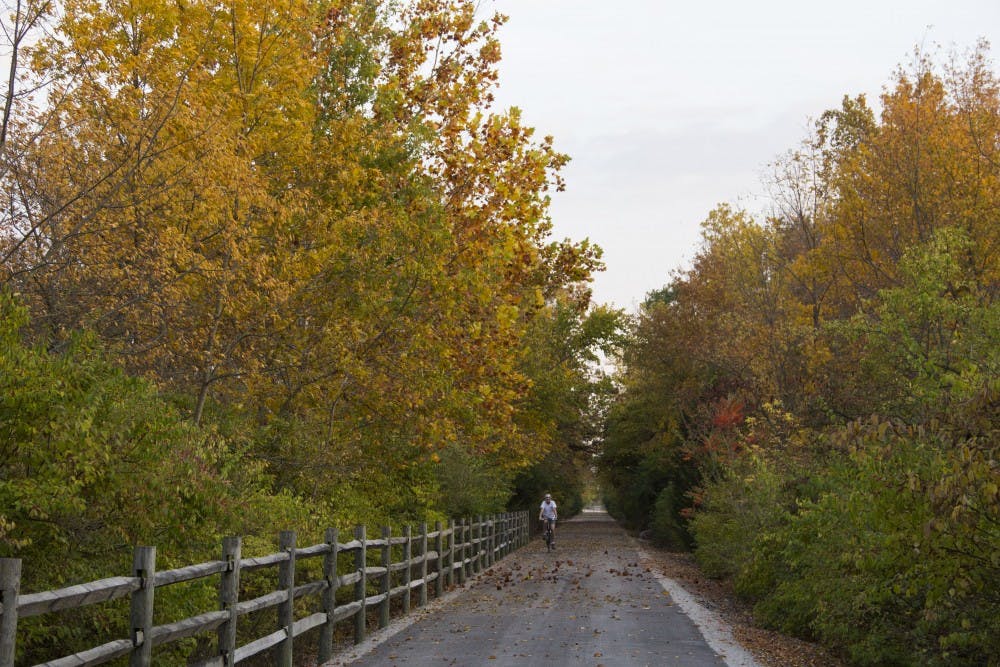As college-aged millennials meet their requirements to graduate in May, choosing their next place to live – if they’re not staying in Muncie – is probably on their to-do list.
Ball State University urban planning professor Scott Truex said, “Young people are choosing places to live versus places to work.”
The Washington Post reported in early 2015 that there are eight things that millennials look for in a place to live. Cheap stuff, affordable places to rent, outlets to improve their health, athletic gear, public transportation, a place to post and look at social media, and places in the community to meet with one another.
Truex said that cities that have community and common places people can intersect, such as coffee houses and farmers markets, will be successful.
Millennials are the most studied demographic and the most sought after demographic for communities to attract to live in their neighborhoods and work for their businesses, according to the City Observatory.
Everyone wants Millennials to move into their towns and cities, and Muncie is no exception, said Traci Lutton, senior project director of economic development in Muncie-Delaware County Economic Development Alliance.
“Millennials are the talent,” Lutton said. “Companies we are recruiting want young capable millennials.”
Lutton said that millennials are the generation employers are looking to for innovation and creativity.
“We want younger people on boards and committees, and Ball State is doing a great job to promote participation in the community,” Lutton said as she noted that Muncie is becoming more and more friendly toward the younger generation.
Although Muncie’s overall population is not growing, Muncie’s millennial population is, according to Stats America and the census website. Since 2000, the population of millennials in the city has grown 5 percent. In 2014 there were about 20,000 millennials in Muncie.
The growth Muncie is experiencing isn’t by accident, either, said Terry Murphy, vice president of economic development for the Muncie-Delaware County Economic Development Alliance.
“We’re trying to change the stigma of Muncie, and so far I believe we’re on the right track,” Murphy said.
Murphy, who has more than 25 years of experience in the field, began working with the Muncie-Delaware County Economic Development Alliance in 1991.
Staff members for the Economic Development Alliance are trying to attract quality, good-paying jobs to Muncie and are trying to build innovation connectors. By focusing on these two areas, Murphy said Muncie can attract millennials.
Muncie just opened co-labs, or company labs, such as ASONS. Essentially a co-lab is a nonprofit startup accelerator that supports entrepreneurial growth.
ASONS is investing $2.33 million in its expansion, which will create up to 316 jobs during the next 10 years.
According to a study by The Rockefeller Foundation and Transportation for America, 66 percent of millennials say that in addition to employment opportunities, they also want access to high quality transportation and affordable housing when deciding where to live.
Muncie has an award-winning public bus service called MITS and public taxis, as well as bus and private car service to and from the Indianapolis International Airport, which takes less than an hour and a half to reach.
Marta Moody, executive director of the Delaware-Muncie Metropolitan Plan Commission, said another way Muncie is trying to draw in people to its community is through connectivity and outdoor areas.
“We’re really focused on outdoor recreation,” Moody said. “The Cardinal Greenway and White River Greenway are great ways to connect our community and promote healthy living.”
The city of Muncie hosts an Iron Man every year, and the city uses this time to show off the Greenway and trail along White River.
Murphy said they are trying to make Muncie a better place for millennials and all people with ongoing projects.
“The revitalization of downtown is a huge step in making Muncie more livable and lively," Murphy said. “We’re starting to attack more retail [stores], and the new [Marriott] hotel just makes downtown look modern.”
Murphy referred to The Advance Regional Development Plan, which is up and running in East Central Indiana as the catalyst for growth during the next 20 years.
According to Advance’s website, “Close to 250 participants gathered in Muncie for the ‘Summit I: State of the Region’ meeting in June 2015. The group generated hundreds of thoughts, comments, and ideas.”
“The ball is rolling. Muncie is – and I think becoming more of – a place people want to move to,” Murphy said.





